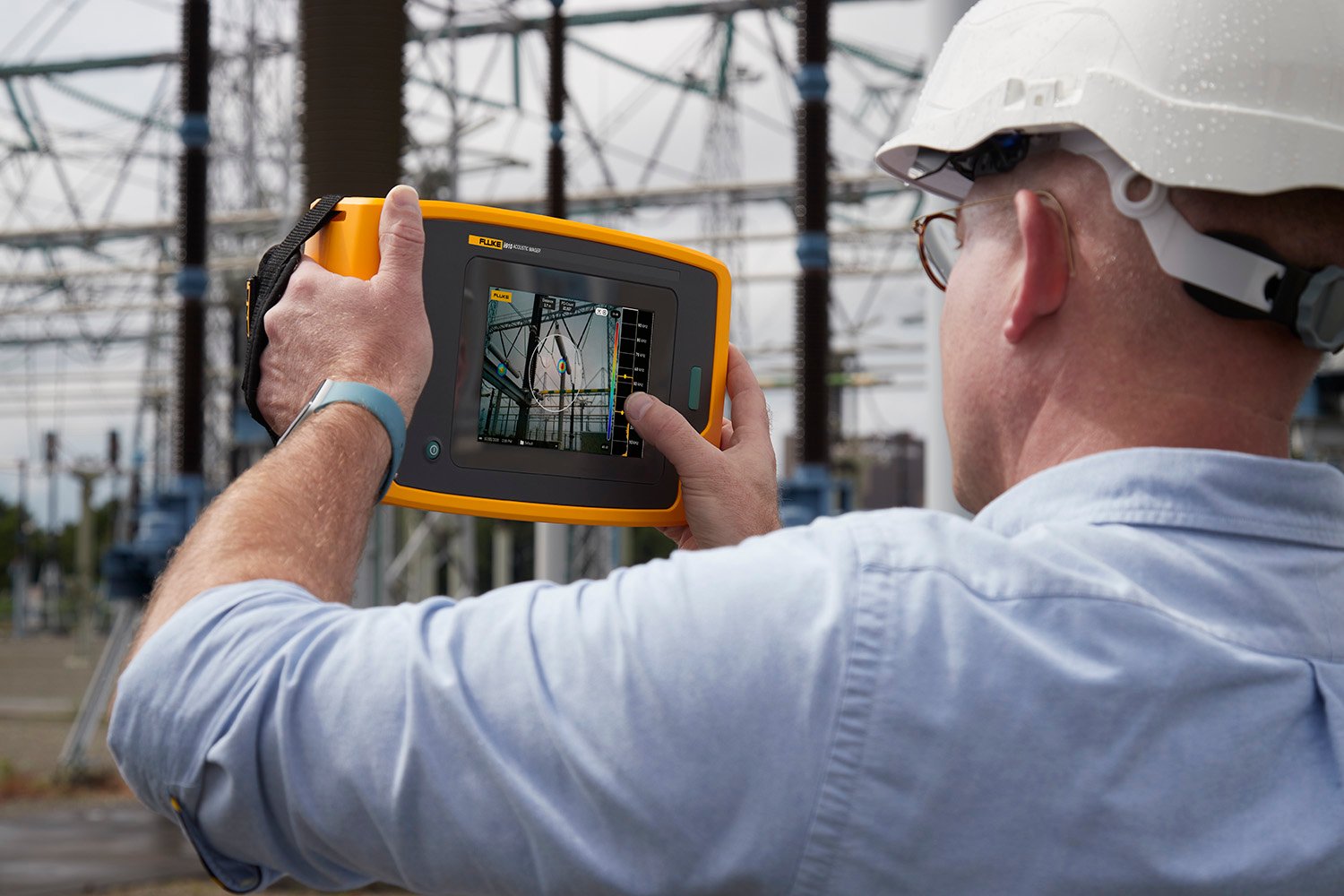The standard definition of partial discharge (PD) is an electrical discharge that does not completely bridge the space between two conducting electrodes. Partial discharge occurs in a variety of locations and mediums in high voltage electrical equipment. Although the terms vary, there are generally four types of partial discharge, each occurring for different reasons and each with the propensity to cause varying levels of damage. Typically caused by a minor defect and resulting in thousands of mini repetitive discharges, the partial discharge propagates and grows over time. Eventually, this can cause catastrophic failures resulting equipment failure and dangerous arc flashes. Of primary concern for most is safety.
 Detecting partial discharge in an electric power distribution facility with the Fluke ii910 Precision Acoustic Imager.
Detecting partial discharge in an electric power distribution facility with the Fluke ii910 Precision Acoustic Imager.
Types of partial discharge
- Corona Discharge: This common form of partial discharge occurs when discharge is directly into the air emanating from the sharp surface of the conductor. (This is what causes the sound and radio frequency emissions.) From a damage or safety perspective, corona isn’t normally concerning.
- Arcing Discharge: Arcing discharge is a prolonged electrical discharge produced by the electrical breakdown of a gas. Plasma is produced when current flows through air, or any other normally non-conductive medium.
- Surface Discharge: When discharge travels along the surface of insulation, this is called surface discharge—or surface tracking. It can be one of the most destructive types of partial discharge. Contamination and weather of the insulator surface are the two most common causes of surface discharge. In medium- and high-voltage equipment, this type of discharge occurs when insulation breaks down, usually due to high humidity or poor maintenance. Moisture intrusion is also a common cause of surface discharge.
- Void (internal) Discharge: This is most often caused by a defect in the solid insulation of cables, bushings, GIS junction insulation, and such. Void discharge is highly destructive to insulation and will typically continue to expand until they cause complete failure.
Partial discharge detection
In general, surface tracking discharges and void discharges are the most concerning and should be a priority to detect and fix for industrial high-voltage electrician, distribution utility technician, transmission utility engineer, an original equipment manufacturer (OEM) high-voltage engineer. In many cases, detecting and correcting partial discharge is a safety priority. Beyond personal safety, damaging partial discharge can cause:
- Downtime
- Fires
- Insulator degradation
- Grid overload
These issues can be avoided if the PD is detected early before substantial damage occurs. Currently there are several methods of detecting partial discharge. Partial discharge is detectable using ultrasound, radiofrequency (RF), and ultra-violet radiation, but the methods used thus far have been incomplete and have disadvantages. These other methods have prevented the discovery of partial discharge from behind enclosures, have required extensive training to use, and have lacked the accuracy needed to ensure prompt attention and repair—not to mention their need to put the user within close range of potentially dangerous equipment.
A better way to detect partial discharge is the Fluke ii910 Precision Acoustic Imager. Fluke’s innovative SoundSight™ technology converts ultrasound into a clear visual. With the Fluke ii910, you can safely locate partial discharge from a distance without the need for cumbersome cords or accessories. Within minutes of opening the box, you can be detecting partial discharge like a pro—it’s simple to learn and easy to use. The Fluke ii910 lets you take pictures of your scan and access rich data for analysis and reporting.